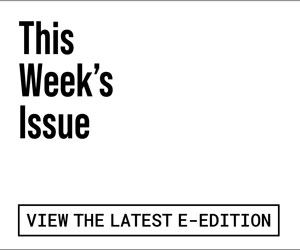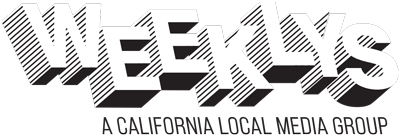The federal government’s funding turmoil has left scores of Marin individuals and families fearing they’ll be homeless—again—next year.
Ninety-four households received an Oct. 20 letter from the Marin Housing Authority (MHA) and were stunned to learn that the program paying a substantial subsidy for their housing will end in 2026, nine years early.
“The Emergency Housing Voucher (EHV) Program, under which you received your voucher, has been funded by HUD and was expected to continue until 2035. Unfortunately, due to unexpected increases in rental costs, HUD has informed MHA that the funding is now forecasted to end before the end of 2026,” the letter said.
Recipients feel scared. Some didn’t realize that they were part of a temporary program, believing they had permanent housing. The Pacific Sun reviewed paperwork held by one voucher recipient, and found it difficult to understand the parameters under which they were housed.
Aside from the potential for people to lose their homes, there’s another egregious problem here. The emergency housing voucher program began in May 2021. I’m no accountant, but it seems somebody in the federal government made a huge math error when projecting that the program could cover rent for 14 years, and instead the whole thing goes kaput in just over five years.
Where to cast blame for gross miscalculations, however, is the least of Alicia Owens’ worries. Owens, 42, a San Rafael resident, lived on the streets for three years before she received an emergency housing voucher in 2022. Since then, she’s found stable housing, landed a part-time job and gives back to the community as a Lived Experience Advisory Board member, helping the county make decisions on homelessness and housing policies.
“The only thing worse than being homeless is being homeless a second time,” Owens said.
Kimberly Carroll, executive director of the Marin Housing Authority, the local agency overseeing the program, told the Pacific Sun last week in an email that none of the 94 participating households will lose their homes due to the end of the funding. In fact, she guaranteed it.
Too bad that guarantee wasn’t in the letter to the emergency housing voucher holders. It might have prevented needless fear and insecurity. Instead, the letter announced that the participants’ names will go on a preferred waiting list for a different government subsidy, the Housing Choice Voucher Program, also known as Section 8.
“When vouchers are available to be issued, applicants will be pulled from the Housing Choice Voucher list in order by the highest number of preference points, and then by lottery,” according to the letter.
Inexplicably, the letter didn’t provide the same assurance that Carroll gave the Pacific Sun; hence, the confusion. Counting preference points and then a random drawing seems like an arbitrary method of allocating housing.
As if the process couldn’t become any more uncertain, yet another major factor will make or break the voucher distribution. Marin has experienced a severe shortage of Section 8 housing vouchers for the last 16 months. Since August 2024, the federal government has suspended issuing Section 8 vouchers to the county.
Now that the government shutdown has ended, it’s anyone’s guess as to whether the Section 8 shortfall terminates and issuing vouchers resumes. Will Marin even receive enough for all the households soon losing access to the emergency housing voucher program that’s circling the drain? Consider that last year Marin County placed a total of 80 individuals in permanent supportive housing. Now, it needs 94 vouchers pronto.
Section 8 is a beneficial program for those with housing insecurity. Under the program, participants pay 30% of their income for rent and utilities, with the federal government subsidizing the remainder of the rent directly to the landlord. Unlike the emergency housing voucher program, the Section 8 voucher remains in effect as long as the recipient stays eligible and complies with the rules.
At this point, funding exists to keep current Section 8 voucher holders housed under the ongoing program. It’s the issuance of new Section 8 vouchers that is up in the air, including ones that will transition the emergency voucher holders into a stable housing situation.
But using Section 8 housing vouchers to replace the 94 emergency vouchers creates a new backlog for Marin’s homeless population. Many of the 1,090 people tallied in the 2024 homeless point-in-time count are also waiting for Section 8 vouchers, with some remaining stuck in the county’s housing pipeline for years now.
Marin houses veterans first, with the most vulnerable next. People without a severe disability may remain perpetually at the end of the line, especially with 94 new households now ahead of them—those who were already housed once through the same system.
According to Gary Naja-Riese, Marin County’s homelessness division director, the county has experienced voucher shortfalls before and can weather the storm again by pivoting to other funding programs.
“Our system is prepared to be creative and responsive to client needs during this time,” Naja-Riese told the Pacific Sun. “Utilizing a variety of opportunities through grant and county funding to connect individuals to shelter and housing, we are in the process of sheltering an additional 108 individuals and providing temporary rent support for 84 individuals.”
Federal funding cuts and California’s stricter funding requirements certainly have squeezed the county. In the face of the new challenges, the county, some of the local cities and towns and nonprofit partners have stepped to the plate. But the bottom line is that there’s not enough money to house all those living on the streets or in temporary shelters.
During a presentation at the Oct. 14 Board of Supervisors meeting, Naja-Riese explained that resolving homelessness in the county is a zero sum game.
“Because of the high cost of housing, because of lack of employment availability, because of the high cost of medical and other care, individuals continue to enter homelessness at a rate that’s almost equal to the rate we’re exiting them,” he said.
Now, the county must backpedal to ensure that the residents of 94 households don’t slide once again into homelessness when the funding ends for the emergency housing voucher program.
Owens believes that allocating Section 8 housing vouchers to those program recipients, including herself, appears to be robbing Peter to pay Paul.
“I feel survivor’s guilt a little bit,” Owens said of the situation. “I’m scared for my friends that are still unhoused. There are so many things that are not working properly within the system on so many different levels. We need to get it figured out. Everybody deserves to have a fresh start.”










